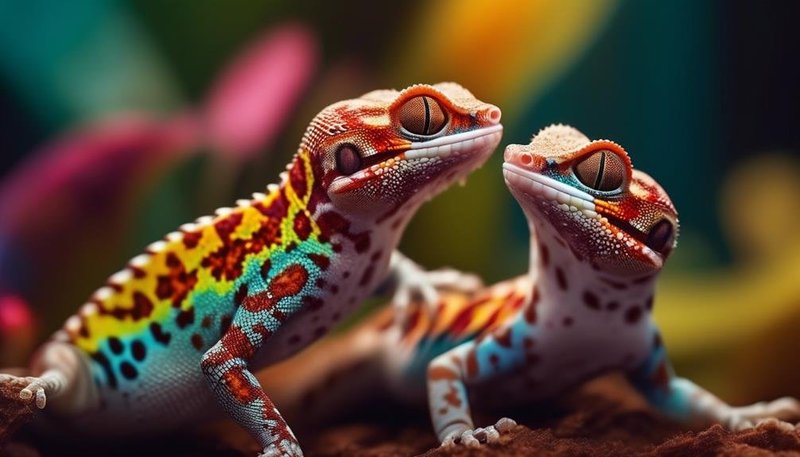
Understanding Gecko Breeding Habits
Geckos typically start their journey into reproduction when they reach sexual maturity, which can vary significantly based on the species. For most gecko species, this age can be anywhere from 6 months to a couple of years—much like humans who are ready for different life stages at varying ages. You might be wondering how a gecko even knows it’s time to start dating. Well, it’s all about the environmental cues! Changes in temperature, humidity, or even the season can trigger this instinct.
Once they’re mature, male geckos often become quite the show-offs. They might display vibrant colors or perform elaborate courtship rituals to attract females. It’s like a peacock displaying its feathers, but with more scaling and less fanning! This behavior can involve vocalizations and body movements that help them stand out among potential rivals. Honestly, watching these displays can be quite entertaining, as males assert their dominance and woo their intended mates.
Territorial Behavior Among Male Geckos
Territory plays a massive role in gecko breeding. Males often stake out a specific area that they defend vigorously. Think of it as their love pad or prized estate where they can impress the ladies. By establishing a territory, the male not only shows off his strength but also ensures he has first dibs on any interested females in the vicinity.
This territoriality can lead to some dramatic skirmishes. Males will confront each other, engaging in pushy displays or sometimes even physical tussles. It’s a big deal! Sometimes, it feels like a high-stakes game show where the winner gets a date. The victor earns the right to mate, while the loser must retreat and find a new area to stake their claim. In the gecko world, intelligence and strategy are just as crucial as physical prowess.
The Mating Process
When a male finally wins over a female, the mating process begins. The male will approach the female cautiously, as females can be a bit choosy. After all, they want a strong mate that can provide good genetics for their offspring. Once acceptance is signaled (often through subtle body language), mating can occur.
What’s really interesting is that some species of geckos engage in a type of mating that lasts several hours! That’s a long date! During this time, the male transfers his sperm via a special organ called a hemipene, kind of like an external reproductive organ—think of it as a delivery service for genetic material. After the mating is complete, the female can store the sperm for several weeks before deciding when to fertilize her eggs, which is a pretty cool survival strategy.
Egg Laying and Clutch Size
After mating, the female gecko will soon start preparing to lay her eggs. Depending on the species, a gecko can lay one to several eggs at a time, usually in a safe, hidden location. They prefer warm, moist places—think of it as finding a cozy nest that feels just right for their little ones!
Most geckos lay soft-shelled eggs that can be quite leathery—so they’re not as fragile as bird eggs. The clutch size can vary. For example, leopard geckos typically lay two eggs at a time, while other species might lay only one. After laying the eggs, the female generally leaves them to develop on their own, which is quite different from other animals like birds that care for their young.
Incubation and Hatchling Survival
Once the eggs are laid, the clock starts ticking. Incubation usually takes anywhere from 30 to 90 days, depending on factors like temperature and humidity. Warmer temperatures can speed up the process, while cooler temps slow it down. It’s like waiting for your favorite cake to bake—patience is key!
When the hatchlings finally emerge, they are generally pretty self-sufficient. They look like miniature versions of adults, ready to scurry off and start their own lives. Here’s the thing: survival can be tough for young geckos. They have to dodge predators, find food, and adapt quickly to their environment, which can be challenging. Their tiny size makes them vulnerable, but their ability to hide and camouflage helps increase their chances of living long enough to breed themselves.
The breeding and reproductive behavior of geckos is a captivating and complex topic. From the way males display their strength to impress females to the intricate process of egg-laying and nurturing hatchlings, there’s so much to learn and appreciate. It’s a reminder of how diverse and adaptable life can be in the natural world.
As you can see, geckos are not just cute little lizards; they are fascinating creatures with rich behaviors and strategies for survival and reproduction. Understanding this aspect of their life helps us appreciate not only geckos but wildlife in general. So next time you spot a gecko in your garden or home, take a moment to think about the incredible journey it might be undergoing—whether it’s looking for love or nurturing the next generation.

